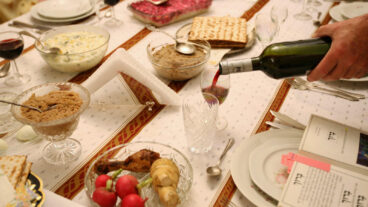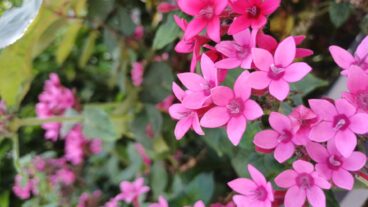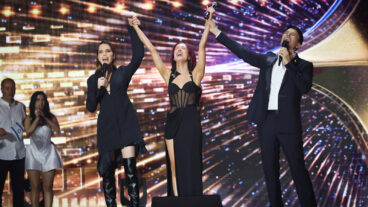Exploring 60 years of Israel’s art history at the Jerusalem Artists House.For 3,000 years or so before modern day independence in 1948, Jews kept and carried their own unique art and culture into the Diaspora. Characterized by the nation’s rich biblical history and the cultures where Israelis had lived over the millennia, today at 60 and with the Diaspora united once again, Israeli art and culture takes on a whole new meaning.
Still waiting to be defined, says Ruth Zadka, executive director of the Jerusalem Artists House in Jerusalem, Israeli artists and culture are now coming into their own. Zadka was speaking to a large delegation from San Francisco who flew into Israel this month to mark the nation’s 60-year anniversary of independence.
Synonymous with high tech startups and medical research – and of course the ongoing conflict – this influential group came to Israel to learn about a side of the country that’s rarely seen in the headlines. During the seven-day tour in the arts and culture track, one of five options, the delegates explored the last 60 years of Israeli arts and culture.
Among the stops were with reps from the famed Sam Spiegel Film & Television School in Jerusalem, museums such as Ein Harod, a gastronomical journey through Israeli gourmet food, as well as a glance into the past at the Holocaust museum, Yad Vashem.
The tour was organized by San Francisco’s Jewish Community Federation (JCF), which represents the Jewish community throughout the San Francisco Bay Area. Among the 104 member delegation was San Francisco’s Mayor Gavin Newsom.
On Sunday, the arts and culture group met at the Jerusalem Artists House in downtown Jerusalem. There they spoke with Zadka who introduced them to Israel’s artist Bezalel Schatz and explained how he influenced modern Israeli art. Then with a fast forward to modern-time, they met one of Israel’s internationally exhibited industrial designers Tal Gur, who inspired many “oohs and ahhs.”
Only a couple of days into the trip, the delegation, full of enthusiasm, was eager to share their impressions and insights. Some had been to Israel before, for others it was their first time.
Nanette Freedland, a psychologist and a JCF board member who is married to businessman Rich Freedland, told ISRAEL21c that she’d joined the arts and culture group to understand better how Israeli people are “existing,” impacting and shaping their own culture.
She was impressed by the tour of Yad Vashem, where she learned about the horrors of the Holocaust through an artist’s lens. “I had been there before,” she says, but never saw the museum “through the eyes of an artist.”
Liki Abrams, a lay leader from the JCF who helped organize the trip, said it’s a little known fact that Adolf Hitler had a “favorite” Jewish photographer – a woman – who knew how to take his portrait to make him look tall and imposing.
The Germans favored Jewish art and tailors in that era, she says, a strange dichotomy. While they were sending them to the death camps, they had no problem with hanging Jewish-made art on their walls. This is something the group learned at Yad Vashem.
In the small gallery adjacent to the museum, Molly Dick, a relocation consultant from San Francisco, gets excited about the paintings being put before her. They are exploring universal themes, she says – “not just the rabbi at the Wailing Wall. Israeli art today is so beyond that,” she says.
Looking at a photograph of a bridge in progress by Hamutal Davidi, Dick is struck by how the photographer captures both the past and future in her work. It’s not unlike other work Dick is seeing in the region: “Israel is full of hope and is surging into the future,” she comments, noting that Tel Aviv’s vibrancy, in particular shows how “Israel has moved fast and far.”
Don Friend, a real estate investor, and his wife, Janie Friend, a women’s rights activist, were both impressed by Jerusalem’s architecture. In the gentrified area of Mamilla near the Old City says Janie, “I see a respect for the old, a desire for order and [a project] which is done with thought.”
Her husband comments, “It’s livable and usable and has been developed with a respect for what’s there.”
The two were also both impressed by the Israeli short films screened at the Cinemateque the day before. “The films were marvelous, and challenging – reflecting some of the frustrations and inequalities [in Israel],” says Janie.
ISRAEL21c also met Adam Berman, a businessman, who experienced a bite of Israeli life that wasn’t penned into the itinerary. “My first surprise in Israel was when I arrived on Holocaust Day,” he says. “At 10 in the morning, the horns blew and for two minutes everyone stood silent.
“I had an extraordinary awakening why it’s important for Israel to continue existing,” says Berman, touched by how people got out of their cars to commemorate those lost in the Holocaust: When you see something like that, “you can’t help but start crying,” Berman notes.
As this ISRAEL21c reporter was leaving the delegation, Don Friend said he had just one more thing to add: “Israelis like to squeeze everything from life,” he says.












